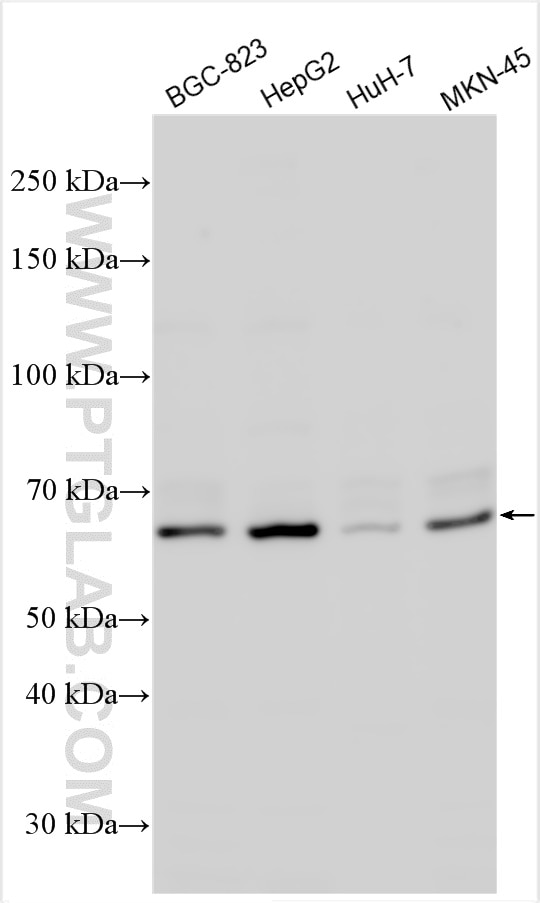GALNT1 Polyclonal antibody
GALNT1 Polyclonal Antibody for WB, ELISA
Host / Isotype
Rabbit / IgG
Reactivity
human, mouse, rat
Applications
WB, ELISA
Conjugate
Unconjugated
Cat no : 21139-1-AP
Synonyms
Validation Data Gallery
Tested Applications
| Positive WB detected in | BGC-823 cells, HepG2 cells, HuH-7 cells, MKN-45 cells |
Recommended dilution
| Application | Dilution |
|---|---|
| Western Blot (WB) | WB : 1:500-1:1000 |
| It is recommended that this reagent should be titrated in each testing system to obtain optimal results. | |
| Sample-dependent, Check data in validation data gallery. | |
Product Information
21139-1-AP targets GALNT1 in WB, ELISA applications and shows reactivity with human, mouse, rat samples.
| Tested Reactivity | human, mouse, rat |
| Host / Isotype | Rabbit / IgG |
| Class | Polyclonal |
| Type | Antibody |
| Immunogen | GALNT1 fusion protein Ag15591 相同性解析による交差性が予測される生物種 |
| Full Name | UDP-N-acetyl-alpha-D-galactosamine:polypeptide N-acetylgalactosaminyltransferase 1 (GalNAc-T1) |
| Calculated molecular weight | 559 aa, 64 kDa |
| Observed molecular weight | 64 kDa |
| GenBank accession number | BC038440 |
| Gene symbol | GALNT1 |
| Gene ID (NCBI) | 2589 |
| RRID | AB_3085639 |
| Conjugate | Unconjugated |
| Form | Liquid |
| Purification Method | Antigen affinity purification |
| Storage Buffer | PBS with 0.02% sodium azide and 50% glycerol pH 7.3. |
| Storage Conditions | Store at -20°C. Stable for one year after shipment. Aliquoting is unnecessary for -20oC storage. |
Background Information
N-acetylgalactosaminyltransferase 1 (GALNT1) is a member of a large family of Golgi resident polypeptide GALNT that initiate mucin-type O-glycosylation by transfer of α-GalNAc from UDP-GalNAc to serine or threonine residues of proteins. GALNT1 is frequently up-regulated in HCC and gastric cancer, and higher GALNT1 expression levels are associated with poorer overall survival (PMID: 25730904, 36439876). The antibody against GALNT1 recognized a specific band at 64 kDa.
Protocols
| Product Specific Protocols | |
|---|---|
| WB protocol for GALNT1 antibody 21139-1-AP | Download protocol |
| Standard Protocols | |
|---|---|
| Click here to view our Standard Protocols |


